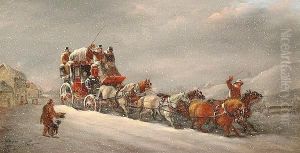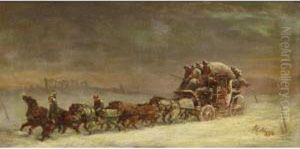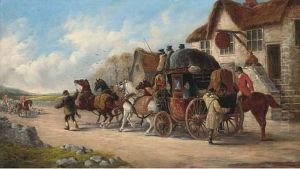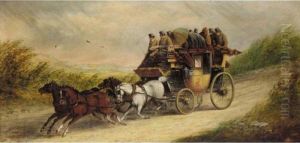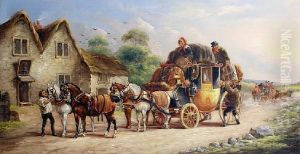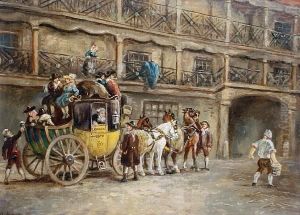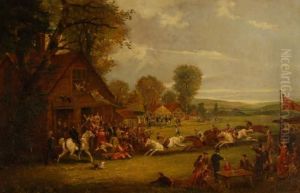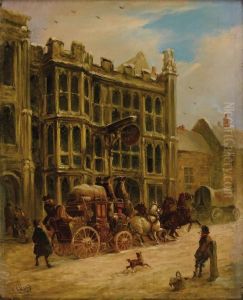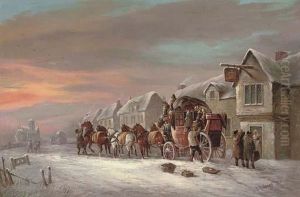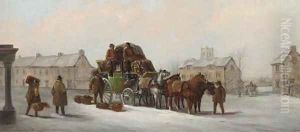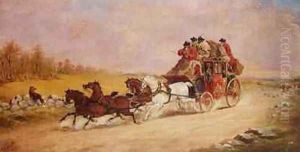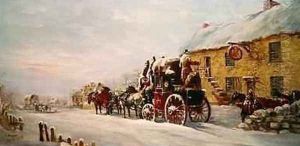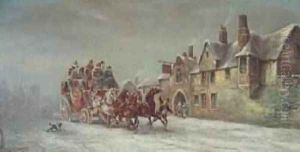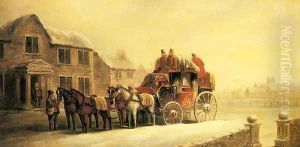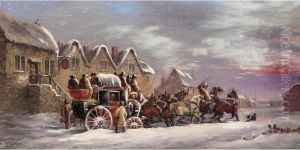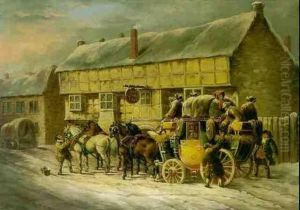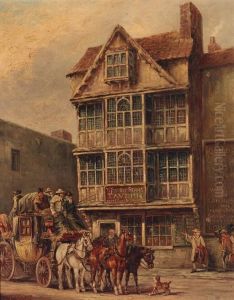John Charles Maggs Paintings
John Charles Maggs was a British painter known for his fine detailed coaching scenes, depicting the coaching inns and the hustle and bustle of the coaching era in England. Born on November 29, 1819, in Bath, Somerset, England, he was part of a family with a strong artistic tradition. His father, James Maggs, was also a painter, and it is believed that he was a significant influence on John's decision to pursue a career in art.
John Charles Maggs received his artistic training from his father and started his career as a coach painter, a common profession at the time for artists who later moved into fine art. He worked on decorating the doors and panels of coaches with heraldic designs and other motifs. His early experience with coaches would later become the subject of his best-known works.
Maggs established his studio in Bath and became renowned for his coaching scenes. These works were characterized by their attention to detail, vibrant colors, and dynamic representation of horses and coaches in motion. His paintings captured the romanticism of the coaching age, which was on the verge of decline due to the rise of the railway system. Maggs' works served as a nostalgic reminder of a bygone era and were highly sought after by collectors.
Throughout his career, he produced a large number of paintings, many of which were reproduced as prints, further contributing to his popularity. While his main focus was on coaching scenes, he also painted landscapes and other subjects.
John Charles Maggs continued to paint until his death on November 14, 1896, in Bath. His legacy endures through his detailed and lively representations of the coaching era, offering a visual historical record of 19th-century British transportation and society. His works are held in various collections and continue to be appreciated by art enthusiasts and historians alike.

